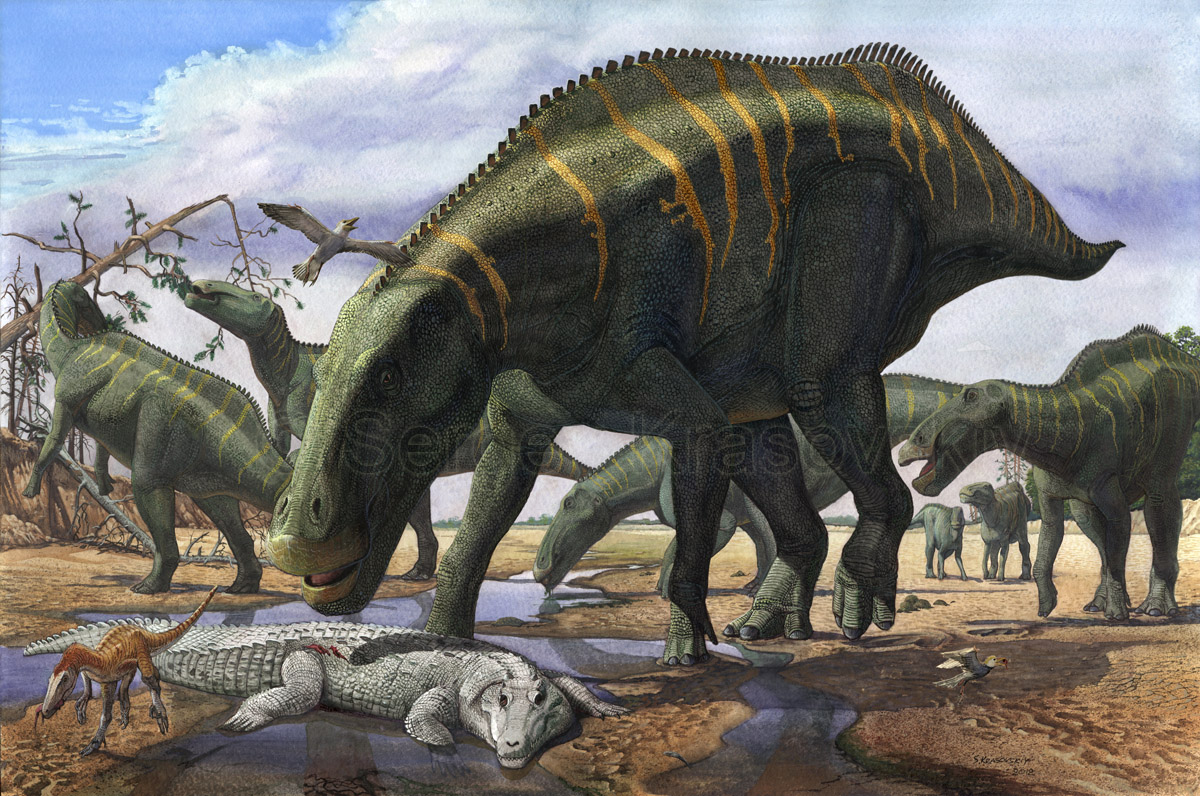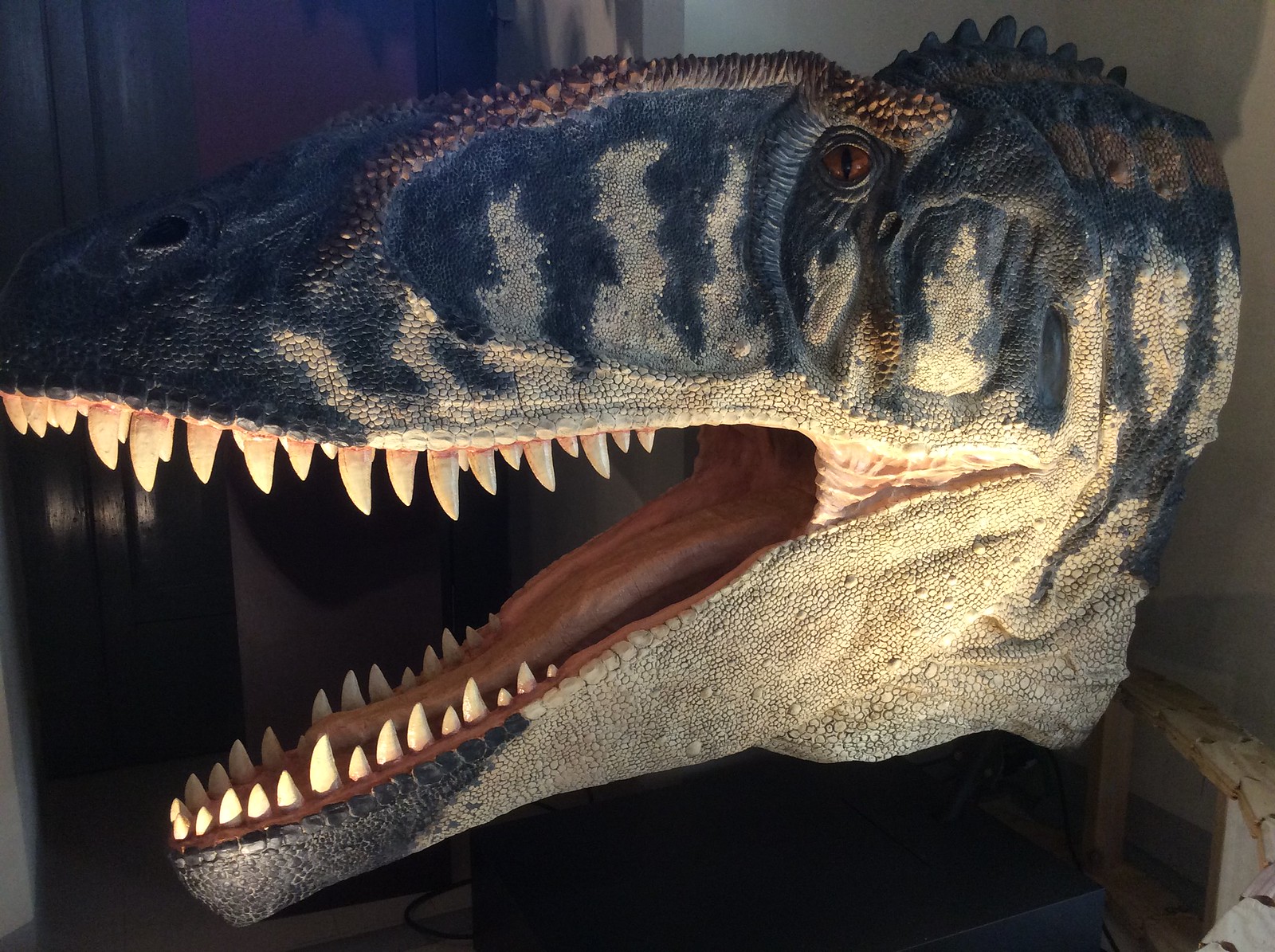Post by Infinity Blade on Mar 15, 2014 21:00:02 GMT 5
Paraceratherium spp.
Paraceratherium, also commonly known as Indricotherium or Baluchitherium (see taxonomic discussion below), is an extinct genus of gigantic hornless rhinoceros-like mammals of the family Hyracodontidae, endemic to Eurasia and Asia during the Oligocene epoch. It was first discovered in 1910 in Balochistan of what is now Pakistan, hence the name, during an expedition by the English paleontologist and Cambridge University Museum of Zoology director Sir Clive Forster Cooper. Paraceratherium was a browsing herbivorous perissodactyl that stripped leaves from trees with its downward-pointing, tusk-like upper teeth that occluded forward-pointing lower teeth. It had a long, low, hornless skull and vaulted frontal and nasal bones. Its front teeth were reduced to a single pair of incisors in either jaw, but they were conical and so large that they looked like small tusks. The upper incisors pointed straight downwards, while the lower ones jutted outwards. The upper lip was evidently extremely mobile. The neck was very long, the trunk robust, and the limbs long and thick, column-like. It lived in and browsed the forests of Central Asia between 34 and 23 million years ago. Its type of dentition, its mobile upper lip and its long legs and neck indicate that it was a browser that lived on the leaves and twigs of trees and large shrubs.

Credit goes to Dmitry Bogdanov for Paraceratherium illustration.
Shantungosaurus giganteus
Shantungosaurus, meaning "Shandong Lizard", is a genus of saurolophine hadrosaurid dinosaurs found in the Late Cretaceous Wangshi Formation of the Shandong Peninsula in China. It is one of the longest and largest known hadrosaurids; the composite skeleton of a medium-sized individual mounted at the Geological Institute of China in Beijing measures 12.88 metres (42.3 ft) in length, and the type skull is 1.63 metres (5.3 ft) long. The weight of this genus is estimated at up to 9 tonnes (9.9 short tons). It is currently the largest known ornithischian (with the possible exception of Huaxiaosaurus) and, indeed the largest non-sauropod dinosaur. Like all hadrosaurs its beak was toothless, but its jaws were packed with around 1,500 tiny chewing teeth. A large hole near its nostrils may have been covered by a loose flap, which could be inflated to make sounds.

Credit goes to atrox1 for the Shantungosaurus illustration.
atrox1.deviantart.com/art/Shantungosaurus-329611091
Paraceratherium, also commonly known as Indricotherium or Baluchitherium (see taxonomic discussion below), is an extinct genus of gigantic hornless rhinoceros-like mammals of the family Hyracodontidae, endemic to Eurasia and Asia during the Oligocene epoch. It was first discovered in 1910 in Balochistan of what is now Pakistan, hence the name, during an expedition by the English paleontologist and Cambridge University Museum of Zoology director Sir Clive Forster Cooper. Paraceratherium was a browsing herbivorous perissodactyl that stripped leaves from trees with its downward-pointing, tusk-like upper teeth that occluded forward-pointing lower teeth. It had a long, low, hornless skull and vaulted frontal and nasal bones. Its front teeth were reduced to a single pair of incisors in either jaw, but they were conical and so large that they looked like small tusks. The upper incisors pointed straight downwards, while the lower ones jutted outwards. The upper lip was evidently extremely mobile. The neck was very long, the trunk robust, and the limbs long and thick, column-like. It lived in and browsed the forests of Central Asia between 34 and 23 million years ago. Its type of dentition, its mobile upper lip and its long legs and neck indicate that it was a browser that lived on the leaves and twigs of trees and large shrubs.

Credit goes to Dmitry Bogdanov for Paraceratherium illustration.
Shantungosaurus giganteus
Shantungosaurus, meaning "Shandong Lizard", is a genus of saurolophine hadrosaurid dinosaurs found in the Late Cretaceous Wangshi Formation of the Shandong Peninsula in China. It is one of the longest and largest known hadrosaurids; the composite skeleton of a medium-sized individual mounted at the Geological Institute of China in Beijing measures 12.88 metres (42.3 ft) in length, and the type skull is 1.63 metres (5.3 ft) long. The weight of this genus is estimated at up to 9 tonnes (9.9 short tons). It is currently the largest known ornithischian (with the possible exception of Huaxiaosaurus) and, indeed the largest non-sauropod dinosaur. Like all hadrosaurs its beak was toothless, but its jaws were packed with around 1,500 tiny chewing teeth. A large hole near its nostrils may have been covered by a loose flap, which could be inflated to make sounds.

Credit goes to atrox1 for the Shantungosaurus illustration.
atrox1.deviantart.com/art/Shantungosaurus-329611091










